If you’re going to be travelling in Chile, Easter Island is just a skip and hop away. The only way you can reach this remote island that marks the southeasternmost point of the Polynesian Triangle is by flying there on one of the daily flights from Santiago, or catching the weekly flight from Tahiti.
Having already spent close to a month travelling around Chile, one week in Easter Island seemed like the perfect way to wrap up the trip! I mean, if not now, then when?!
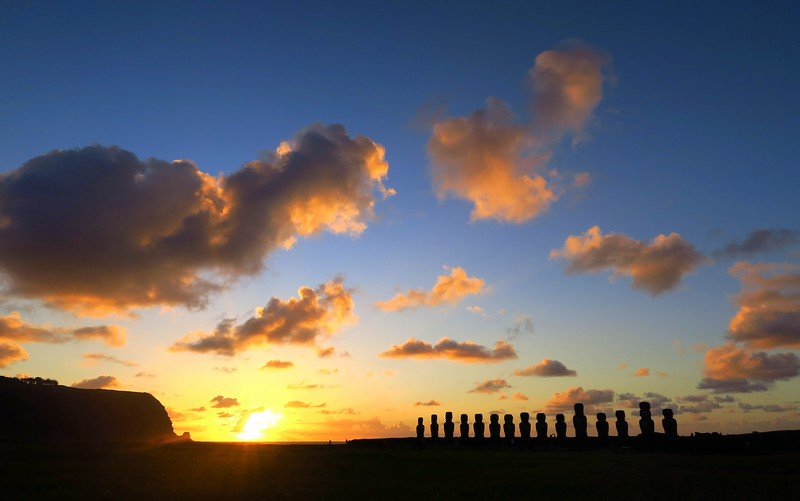
The following blog post will be a day by day breakdown of my visit to Easter Island. This includes hiking volcanoes, visiting the moai archaeological sites, the best spots to watch sunrise and sunset, and more. I hope this well help anyone planning their own trip to Rapa Nui (including how to do it on a budget), so first up a video that Sam and I filmed during our week there, and then let’s move on to the weeklong itinerary!
EASTER ISLAND TRAVEL ITINERARY
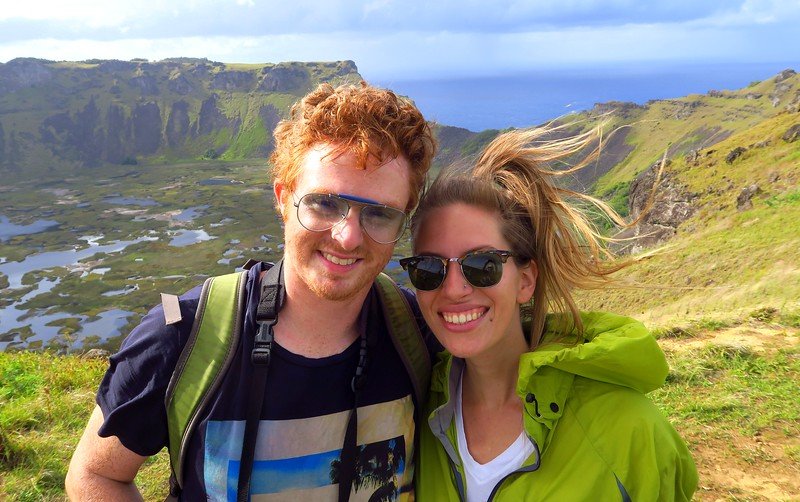
Day 1: Arriving + Checking out the Town
The flight to Easter Island was 5 hours long and I flew aboard LAN’s Dreamliner, which made it an extra smooth flight. Just remember to book a window seat in advance; they are a hot commodity on this particular route!
When our flight landed, the first thing we did at the airport was sort our park admission passes. The pass costs $60 USD ($30,000 Chilean Pesos) for foreigners, or $20 USD ($10,000 Chilean Pesos) for Chileans. The money goes directly into the protection and restoration of the moai, so it’s a nice way to give back to the island.
Once we had sorted the passes and picked up our luggage, we met our hosts who greeted us with lei and then drove us into town. Accommodations in Easter Island are very pricey, but since there were 4 of us we managed to snag a simple yet comfortable cottage for $833 USD for the week. On this island, that’s a bargain!
The rest of our first afternoon on the island was spent exploring a bit of the town on foot and then checking out Anakena Beach, which our hosts graciously offered to drive us up to.
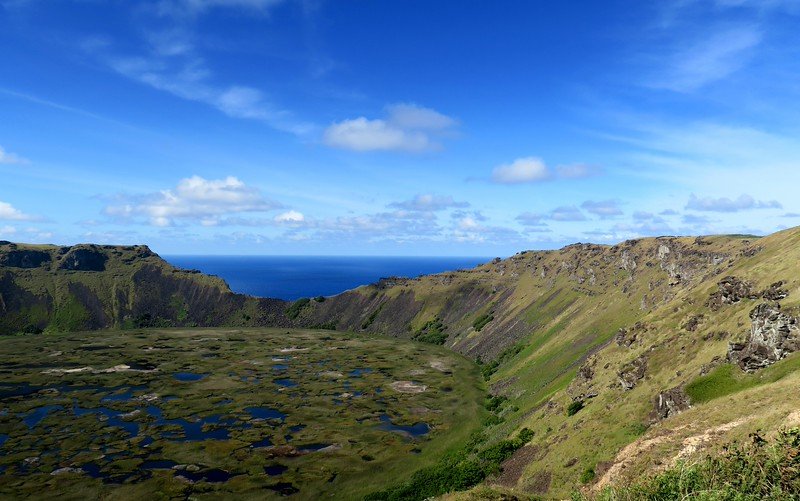
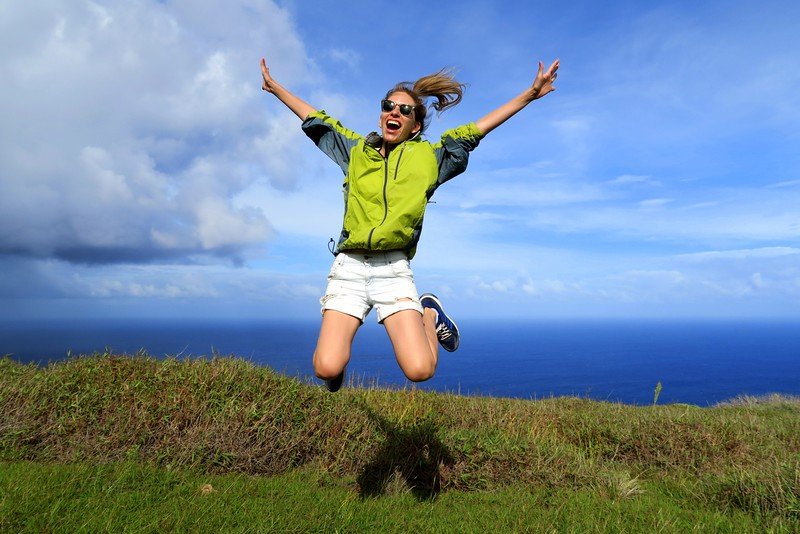
Day 2: Rano Kau Crater + Orongo Village
We kicked off our first full day on the island with a hike up the Rano Kau Crater. Rano Kau is an extinct volcano that forms the southernmost tip of Easter Island and it sits at 324 meters above sea level. You can’t climb into the crater since it’s a protected area, however, you get some really cool views of the wetlands from the rim. The interior of the crater has its own microclimate and it’s kind of fascinating to see how the vegetation can differ between the inside and outside of the rim.
There is a road that leads to the top of the crater, so you could drive there if you wanted to, but we decided to follow the trails and do the hike on foot. We had 2 stray dogs join our pack as we made our way along the outskirts of town, and they stuck with us for the entire trek up and down the volcano. The hike was a relatively easy one with a gradual slope, but I would recommend doing it early in the morning since it does get quite hot as the day goes on. The entire hike took us a little over 4 hours there and back.
Near the Rano Kau Crater you’ll also find Orongo, a stone village and ceremonial centre that sits on the edge of a cliff. Here you’ll find a collection of stone houses and you can learn about the Birdman Cult, which involved an annual competition between the islanders to collect the first sooty tern egg of the season. This meant swimming out to the islet of Motu Nui, then swimming back to Rapa Nui, climbing the sea cliff of Rano Kau, and reaching Orongo. Oh yeah, and the egg needed to be brought back intact. Needless to say, it was a dangerous race where participants put their lives on the line.
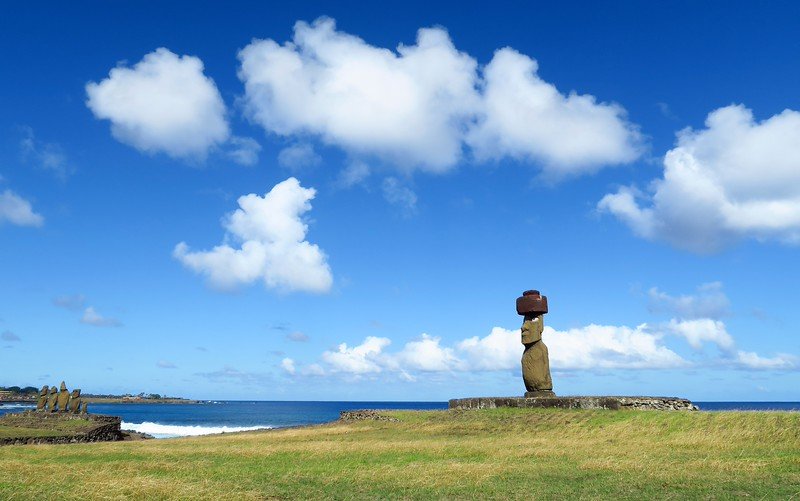
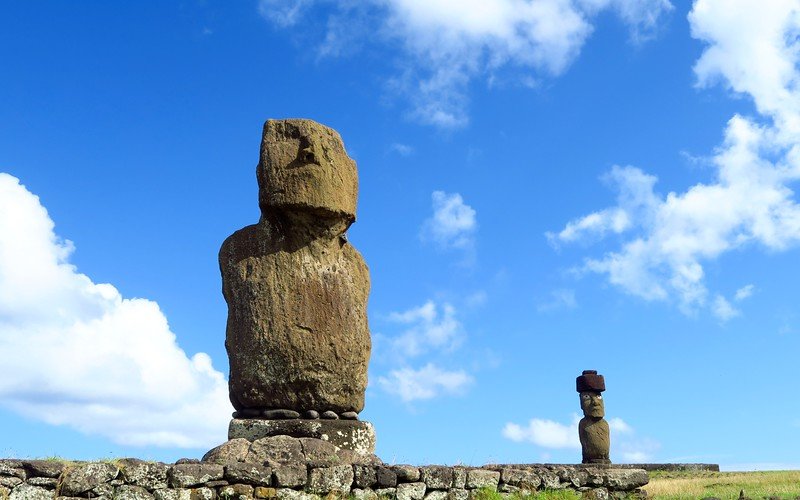
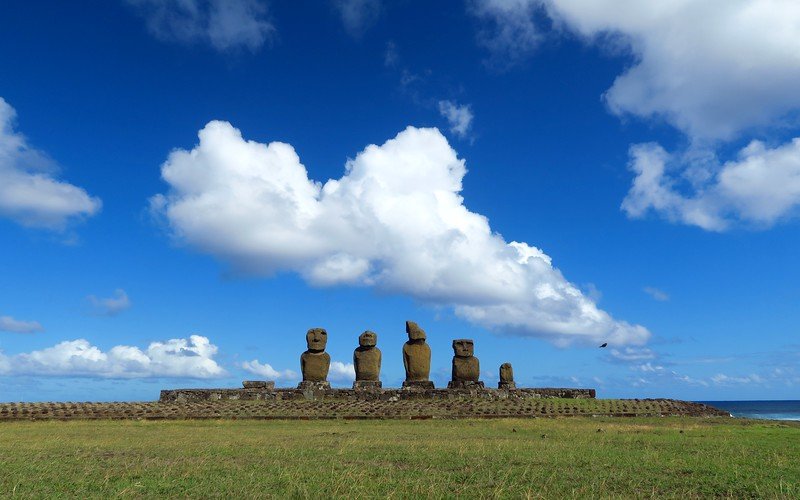
Day 3: Attending Mass + Market Day + Archaeological Museum
Sunday morning started bright and early. Our host had told us that Mass on Sunday Morning was something we shouldn’t miss, so we took her word for it. That morning we put on our Sunday’s best and walked over to the church, where the bells were already ringing. Once we got there, it was clear why she had suggested we swing by church; as soon as we stepped in we could see that local culture plays a major role in mass. The priest wore a headdress with white feathers, and he also had a garland of frangipani around his neck. The message was delivered in Spanish, however, the majority of the songs were sang in Rapa Nui, while a band seated amidst the congregation played guitars and accordions.
After church we did a little bit of shopping. The Artisan’s Market is located just a few meters north of the church, so we walked over to browse the stands. I ended up getting 2 moai statues carved out of volcanic rock as a little souvenir.
Having a look at our map, we saw that the Archaeological Museum was only a few blocks north and since we still had some time to spare before lunch, we decided to have a quick visit. The museum sits on the outskirts of town overlooking the ocean, and they have a giant moai to greet you as soon as you reach the main entrance. While the number of artifacts inside the museum is quite limited, what this places excels at is presenting information. They have a series of information boards that cover everything from how the first Polynesians found these islands, to the rise of a Rapa Nui hierarchy, to various theories on how the moai would have been transported from the quarry. It’s a good place to learn a bit more about the island, though you may just walk away with more questions – this is a fascinating place with so much of its history still shrouded in mystery.
After visiting the museum we walked back to town following the dirt road that runs along the coast. Here we came across the Tahai Ceremonial Complex, which is home to 3 platforms with moai. They include: Ko Te Riku (the only moai with restored eyes on the island!), Tahai (a single moai whose face is quite eroded), and Vai Ure (a platform with 5 damaged statues). After seeing the complex by day, we ended up walking back to watch the sunset – best spot on the island to do so!
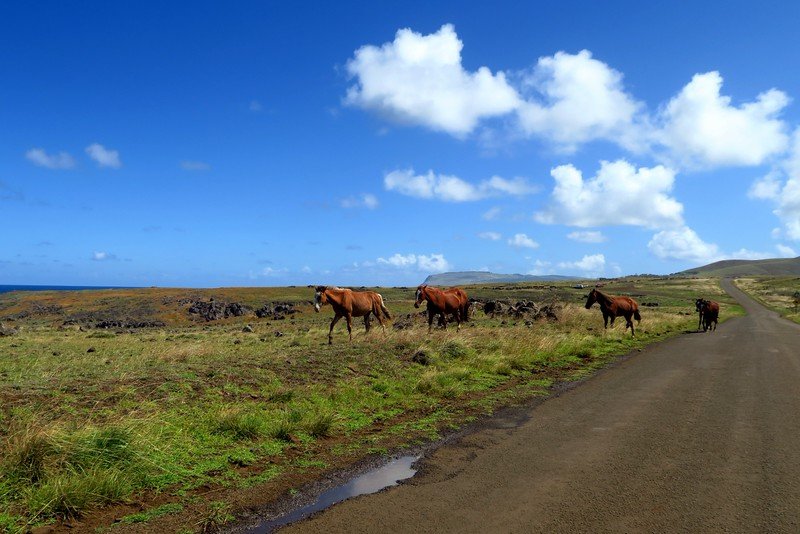
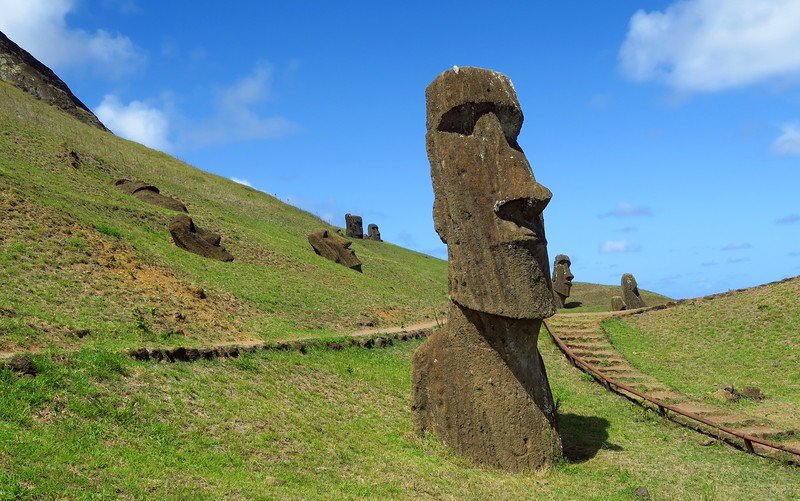
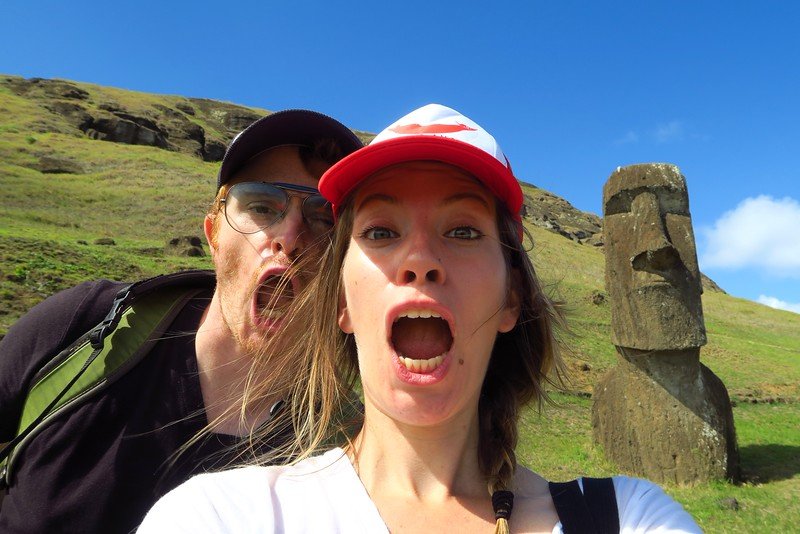
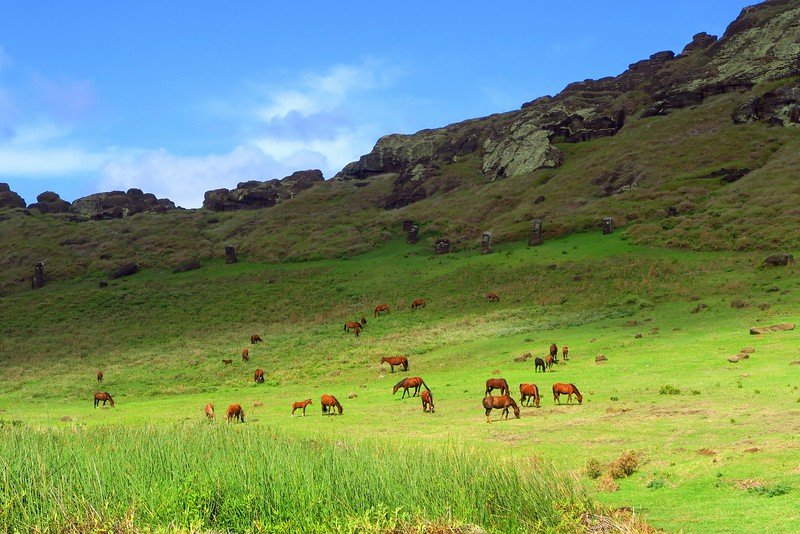
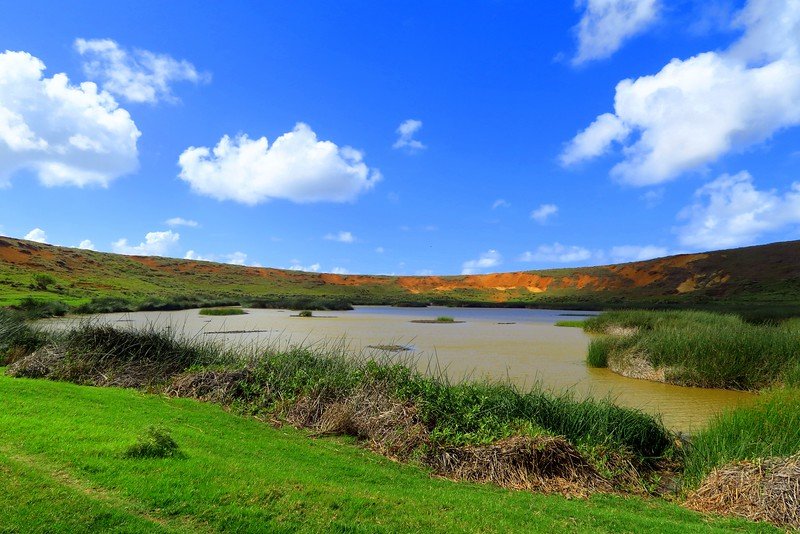
Day 4: Rano Raraku + Wetlands
On Day 4, we hopped in the car and drove out to Rano Raraku, which is yet another extinct volcano that happens to be the quarry that supplied the stone from which the moai were carved. The quarry was used for roughly 500 years, until the early 1700s, and it supplied 95% of the statues that you see scattered across the island. It’s a pretty cool site to visit because you can see some moai that were left unfinished – some are still attached to the rock – and it helps you visualize what the whole process must have been like.
After seeing the moai, we followed the path that leads to the volcano crater. Unlike Rano Kau, some parts of Rano Raraku can be explored on foot, so it’s worth the short climb to the top. Once you set foot inside the rim, you’ll be shocked by the change in landscape; the earth is a burnt orange, there’s a freshwater lake surrounded by reeds, and we even spotted some wild horses grazing in the distance.
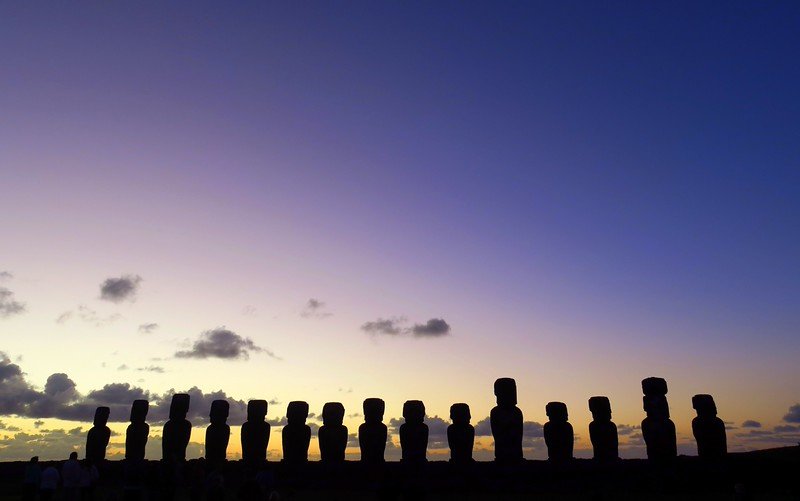
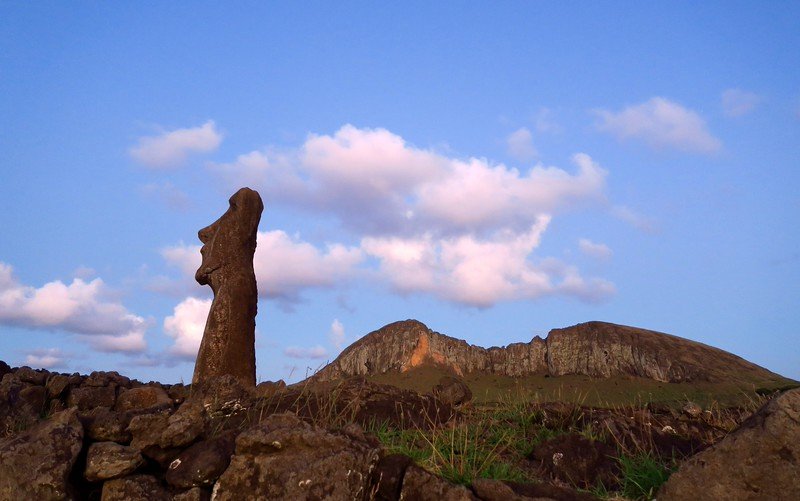
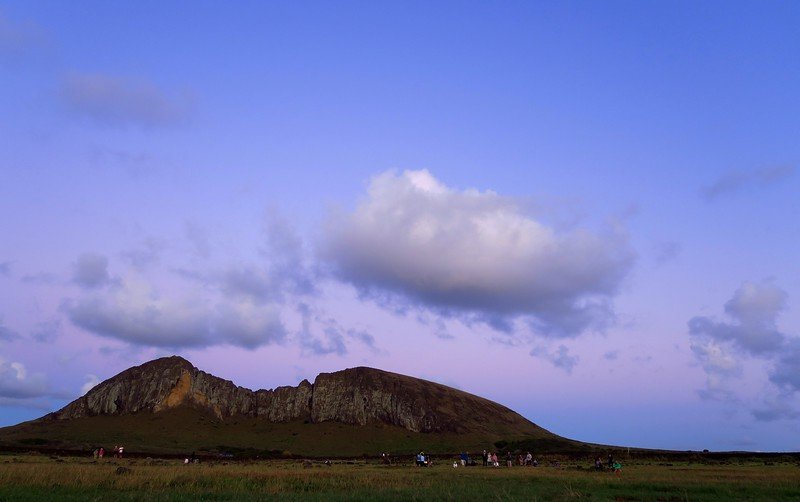
Day 5: Tongariki + Ahu Akivi + Ahu Tepeu + Drive the Island Loop
Day 4 involved another early start. Since we had the rental car at our disposal we drove all the way out to Ahu Tongariki to watch the sunrise – best spot to do so on the island! Tongariki is home to 15 towering moai with their backs turned to the sea, and it was a pretty spectacular sight to watch the sun paint the sky soft shades of violet, lavender and then pink.
Later that day we drove to Ahu Akivi, which is one of the more unusual sites on Easter Island since the 7 moai are facing out to sea rather than inwards. These moai are also located inland as opposed to along the coast.
From Ahu Akivi we decided to do the hike to Ana Te Pahu and Te Peu . In retrospect, this is a part that I would probably skip. It was a really long hike and to be honest there wasn’t much to see along the way. If you’re really into archaeology like the university group that was touring ahead of us, you might enjoy the small caves and piles of rocks along the way, but there are far more impressive sites to visit if you’re strapped for time.
Later that afternoon, we took the car and ended up driving the big loop around the island. Once we left Hanga Roa we followed the coastal route south towards Ahu Tongariki, we went past the Poike Volcano looming in the distance, we then followed the road towards the north end of the island that took us past Anakena Beach, before finally cutting inland and returning to town. It was such a peaceful drive with hardly another vehicle to be seen and lots of wild horses.
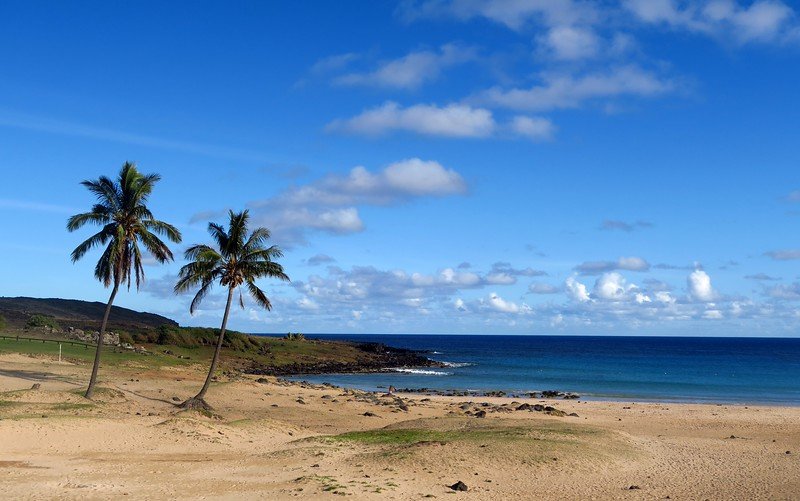
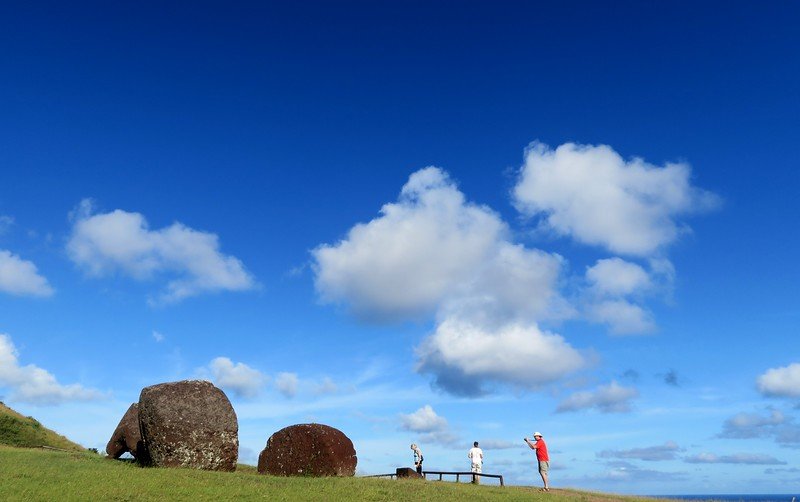
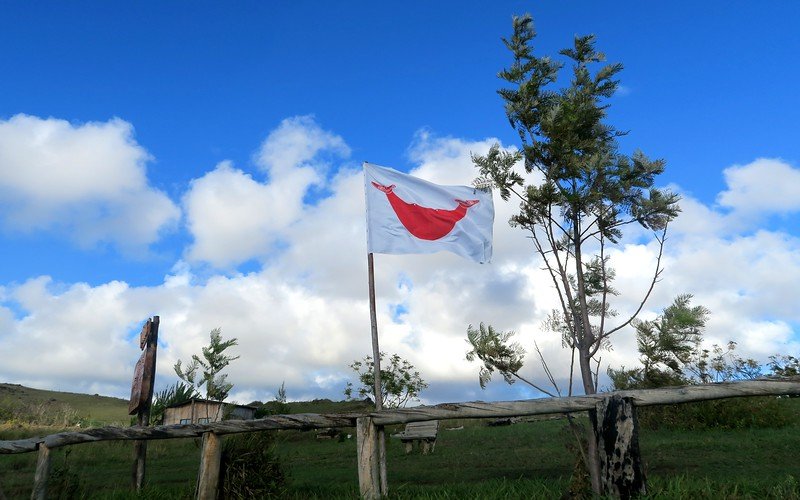
Day 6: Anakena Beach + Puna Pau + Vinapu + Orongo Village + Traditional Dance
This was our last morning with the rental car, so again we started the day early. In the morning we drove back to Anakena Beach to have a look at the moai. We had already visited this site, but the light hits it a lot better earlier on in the day and it was nice to start the morning with a walk along the beach.
From there we headed back south and took the turnoff to Puna Pau. This is an interesting site because it’s where the pukao (head pieces of red volcanic rock) were made. There’s still much debate about whether the pukao are meant to resemble feathered hats, turbans, or locks of hair wrapped atop the moai’s head, but visiting the site will give you an idea of the sheer size of these rocks.
After visiting Puna Pau we drove to Ahu Vinapu, which sits on the southern tip of the island near the airport. We had noticed the turnoff on our drives along the coast, so we finally decided to check it out. The most interesting feature of this site is a basalt wall that resembles the same type of stonework you can see in Cuzco and Machu Picchu.
Lastly, we drove back up to Orongo Village. We had already been up to Orongo when we hiked up to Rano Kau, however, it had started pouring rain shortly after we arrived, so we never got to tour the village. There is a trail that winds through the archaeological site, which allows you to get up close to the round houses built out of flat stone. They reminded me a bit of the rondavels I saw in South Africa.
Later that evening we went to see a traditional dance in town. It was a fascinating performance with strong Polynesian roots. There was one dance performed by the men that was a lot like the Haka warrior chant they do in New Zealand, and there was another dance performed by the women that made me feel like I was in Hawaii. If you only have a few days in town, this is something you may want to schedule early on in your visit since most venues don’t have shows every single day.
Day 7: Rain Day + Relaxing
No sightseeing whatsoever! We woke up on Day 7 to dark skies that proceeded to unleash a torrential downpour over the island. It rained all morning long, so we took that as a sign to just stay indoors and rest. Thankfully I had loaded my Kindle with 3 new books to keep my busy, plus our cottage also had a few board games and a couple of decks of cards. By mid-afternoon the sun had come out, so we just went into town for some food and ran a few last minute errands.
Day 8: Fly Back to Santiago
And just like that our week was over and it was time to fly back to Santiago! Since our flight departed in the afternoon, we had the morning to pack up and enjoy one last leisurely meal in the cottage. Our hosts then drove us to the airport and bid us farewell with hugs, kisses, and seashell necklaces to remember the island by.
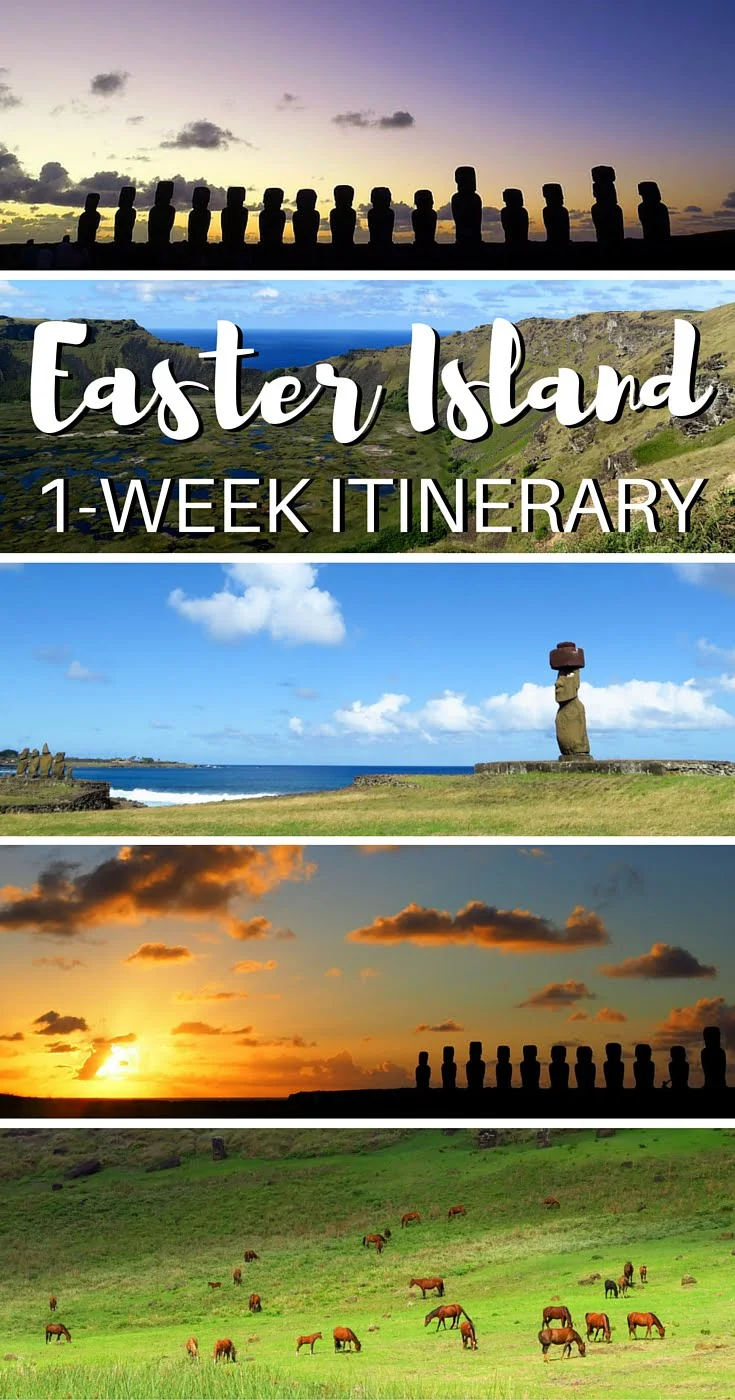
As you can probably tell, one week was more than enough time to tick off all the main sites on Easter Island and then some. There were a few places I ended up going back to more than once just to see it at a different time of day, but if you were pinched for time, you could easily cover Easter Island in 3-4 solid days of sightseeing.
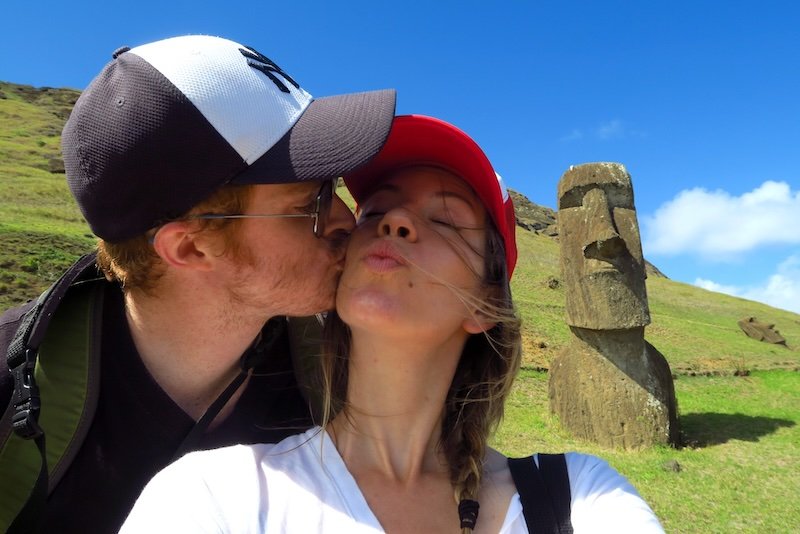
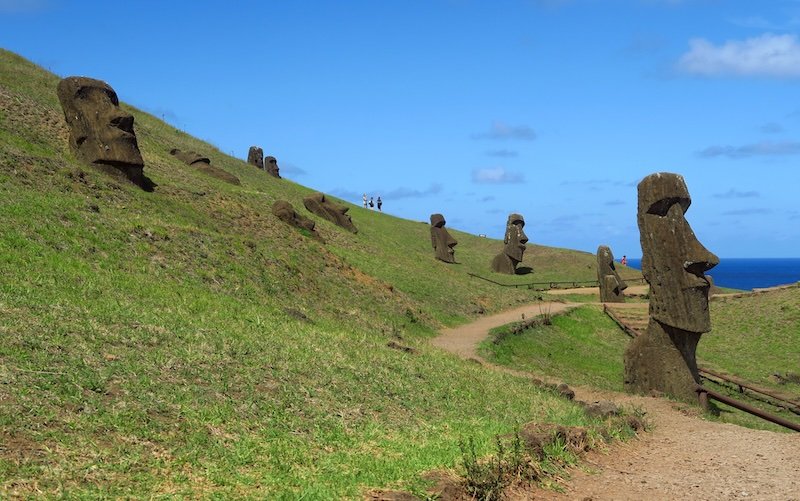
Practical Guide to Planning Your Week on Rapa Nui (Budget Tips, Routes, Packing & FAQs)
How Many Days Do You Actually Need?
If you’re tight on time, you can see Easter Island in 3–4 days. However, I still think a week is perfect if possible.
Sample 3–4 Day Condensed Plan
- Day 1: Arrive, get your park pass, stock up on groceries in Hanga Roa, sunset at Tahai.
- Day 2: Rano Raraku quarry → Ahu Tongariki → beach time at Anakena.
- Day 3: Hike Rano Kau rim + Orongo village → Puna Pau (pukao quarry) → Vinapu.
- Day 4 (optional): Ahu Akivi + inland caves trail (Ana Te Pahu) or snorkel/eat/relax day.
One-Week Slow Plan (the vibe of this post)
- Everything above plus a lazy beach morning, a second Tahai sunset, a traditional dance show, and a weather buffer day (because island skies have moods).
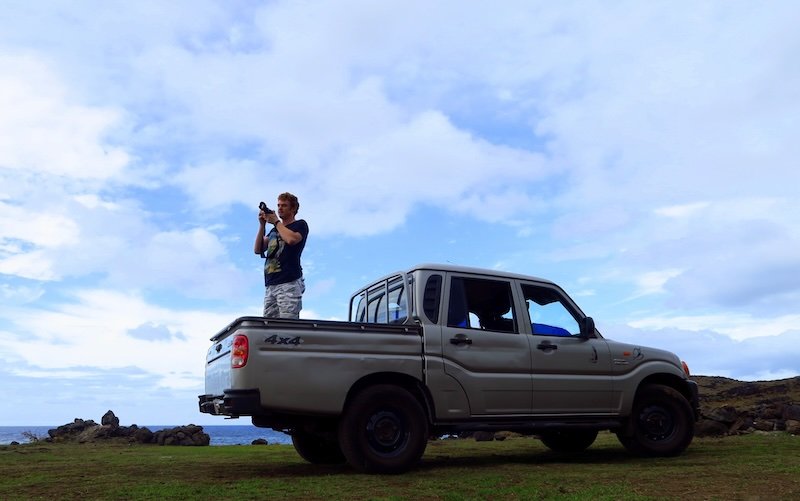
Getting Around the Island: What Actually Works
Rapa Nui is small. But distances do add up. Here’s the honest breakdown:
| Transport | Best For | Pros | Keep in Mind |
|---|---|---|---|
| Car rental (manual/auto) | Most travellers for 2–7 days | Full flexibility, easy sunrise starts, beach chair in the trunk | Book early; roads are good but watch for horses |
| Scooter/ATV | Confident riders in dry weather | Fun, cheap on fuel, easy parking | Wind/sun exposure; rain changes plans fast |
| Bicycle | Short coastal spins | Active, budget-friendly | Heat, hills and distance to Tongariki are real |
| Guided tours | 1–2 day highlights runs | History context, zero logistics | Fixed schedule; revisit favorite spots on your own |
| Taxis/transfers | Point-to-point, evenings | No parking worry | Fewer options outside Hanga Roa after dark |
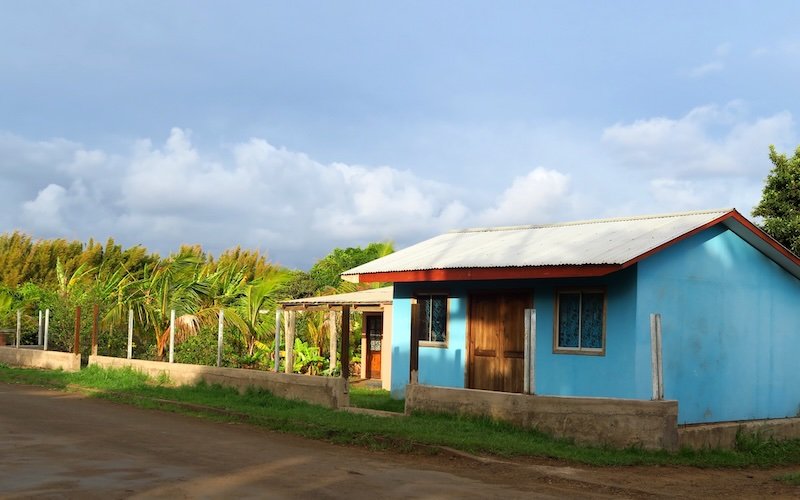
Where to Base Yourself
Most stays cluster in Hanga Roa (the only town). From here:
- North/east loop (Tahai → Rano Raraku → Tongariki → Anakena) = the classic full-day circuit.
- South loop (Hanga Roa → Vinapu → Rano Kau → Orongo → coastal viewpoints) = half day + lazy lunch.
- Inland (Ahu Akivi, Ana Te Pahu caves, Te Peu) = half day on foot/drive.
Accommodation styles:
- Cabañas (self-catering cottages) are great for groups and budgets (bring provisions).
- Guesthouses/B&Bs for breakfast and tips from locals.
- Hotels for services and sunset bars.
Book early in peak months and around the Tapati Rapa Nui cultural festival (usually in February), when everything is lively and availability is…not.
Sunrise, Sunset & Starry Skies: A Simple Planner
- Sunrise: Ahu Tongariki is the showstopper—15 moai with pastel clouds behind. Arrive early, keep voices low, dress warm.
- Sunset: Tahai Ceremonial Complex is the island’s golden-hour living room. Pack a blanket and a thermos. Anakena can glow too if clouds cooperate.
- Midday light: Use it for Rano Raraku (moai faces pick up texture) and museums/markets.
- Stargazing: Rapa Nui skies are famously dark. After dinner, step a block away from town lights and look up—no gear needed.
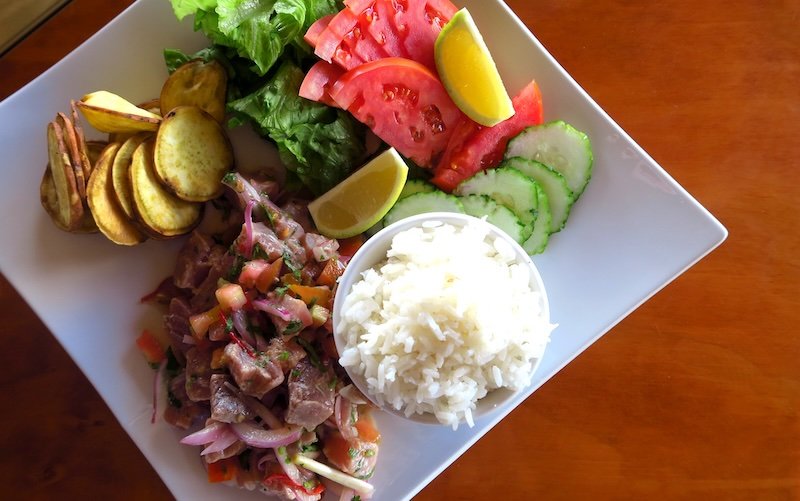
Food, Groceries & Budgeting for Easter Island
- Self-cater for breakfasts + beach lunches if you’re in a cabaña (island prices add up).
- Eat local: fresh tuna/ceviche, empanadas (try atún y queso), po’e (banana bread-cake), and ocean-view picnics.
- Bring a pantry starter from Santiago (coffee/tea, pasta, spices, snacks).
- Tap water: Ask your host; many visitors use bottled/filtered for drinking and tap for cooking/tea.
- Cards vs cash: Cards work widely in town but carry pesos for small shops/stands and out-of-the-way stops.
Very rough budget feel (per person/day):
- Shoestring: self-cater + bike/scooter + a snack or two.
- Mid-range sweet spot: cabaña split + car rental split + sit-down dinner.
- Treat-yourself: hotel + guided tours + meals out + show tickets.
Packing List That Actually Matches Island Life
Wear & Layer
- Light tees + a long-sleeve sun layer
- Fleece/puffy for pre-dawn winds
- Packable rain shell (squalls happen)
- Quick-dry shorts + breathable pants
- Swimwear + microfiber towel
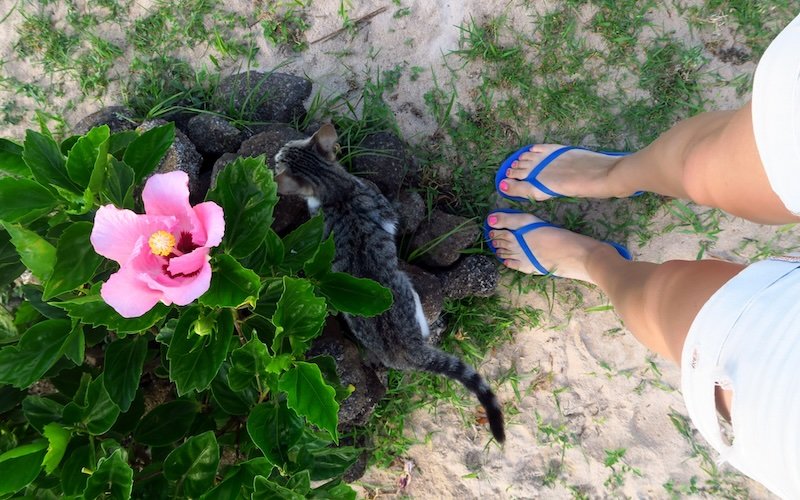
Feet & Sun
- Broken-in sneakers/hiking shoes
- Flip-flops/sandals for beach and showers
- Wide-brim hat, sunglasses, reef-friendly SPF 50
- Reusable water bottle (dehydration creeps up)
Handy Extras
- Headlamp (cave visits, evening walks)
- Daypack with a dry bag for spray/showers
- Power bank (you’ll film more than you think)
- Basic first-aid + motion tabs (boat/snorkel days)
- Bug balm (post-rain mosquitoes near wetlands)
Respectful Moai Etiquette & Park Sense
- Do not touch, sit, or climb on ahu (platforms) or moai. Ever.
- Stay behind ropes and on marked paths. The ground holds archaeology too.
- Drones: Regulations are strict; assume no unless you’ve secured formal permission.
- Wild horses: Beautiful, free-roaming, and unpredictable—give them space.
- Pack it in, pack it out: Litter blows fast on an island; tuck micro-trash away.
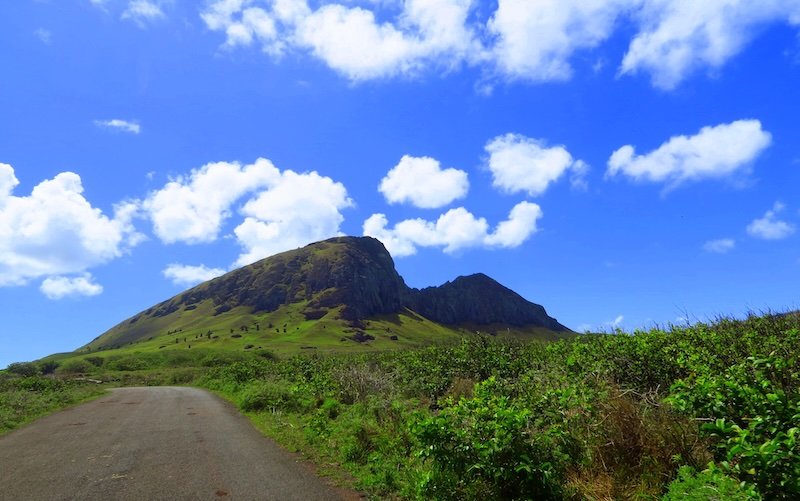
Stringing the Sites: Two Easy Full-Day Circuits
The East & North Coastal Loop (Full Day)
Hanga Roa → Rano Raraku → Ahu Tongariki (linger even after sunrise) → picnic/photo stops along the rugged coast → Anakena Beach (moai + swim + nap) → back to town.
- Why this order? You’ll beat midday glare at Raraku, see Tongariki in soft light, and reward yourself with a beach afternoon.
South Rim & Clifftop History (Half to 3/4 Day)
Hanga Roa → Vinapu (Inca-like stonework) → drive up to Rano Kau viewpoint → Orongo (walk the village trail & learn the Birdman story) → coastal overlooks → late lunch in town.
- Stretch goal: If clouds clear, circle back for Tahai at sunset.
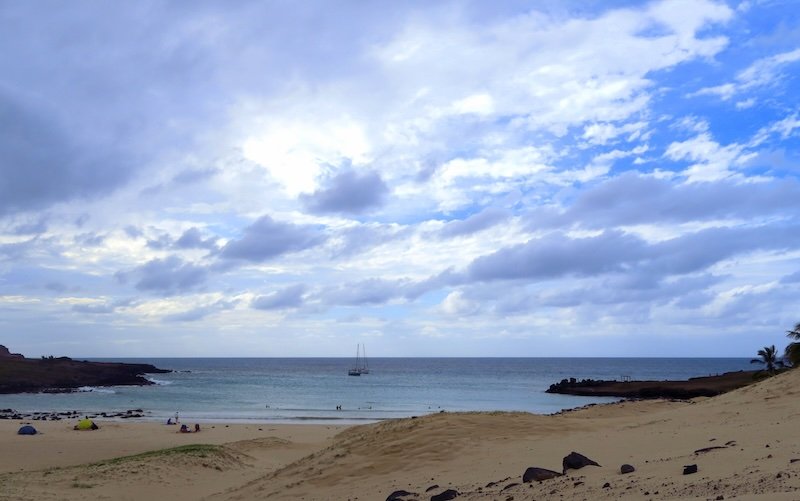
Beach Notes: Where to Swim & Chill
- Anakena: Postcard-perfect cove, soft white sand, moai watching the shore, gentle swim (respect any posted conditions).
- Ovahe: More rugged pocket beach; access/conditions vary—check locally.
- Pea Beach (Hanga Roa): Small, protected, handy for a quick dip and a juice after.
Save-This Checklist
- Flights booked (aim for a window seat)
- Park pass plan (buy on arrival; carry it on site days)
- Car/scooter reservation (or tour day locked)
- Accommodation with kitchen if you’re budgeting
- Groceries list + a few pantry staples from the mainland
- Offline maps downloaded for the island
- Show tickets pencilled in (traditional dance nights)
- Reef-safe sunscreen + bug balm + headlamp
- Thermos for sunrise coffee at Tongariki
- Respect the moai, the land, and the horses—and you’re golden
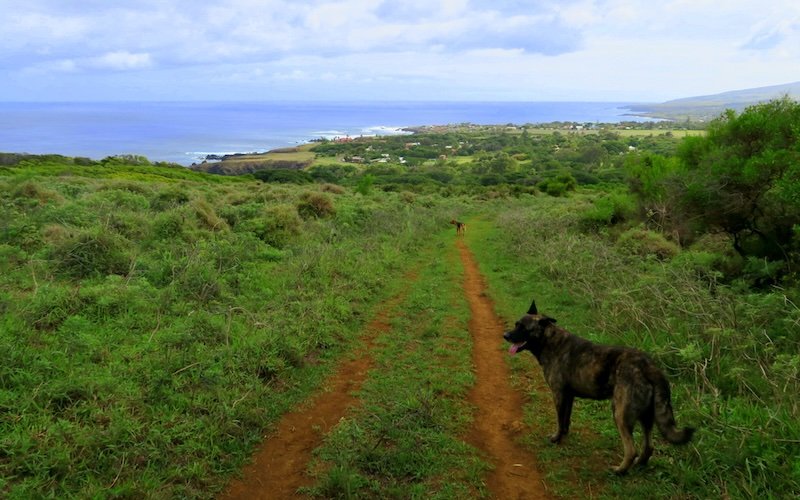
Easter Island / Rapa Nui FAQ (12 Quick Answers)
- Do I need a park pass?
Yes. You’ll purchase a single island pass that covers the main archaeological areas. Carry it with photo ID—some sites check. - Can I visit Rano Raraku and Orongo multiple times on one pass?
Popular spots sometimes limit re-entry within the pass period—plan to take your time on your first visit so you don’t feel rushed. (If you know you’ll return for light, structure your day around that.) - Is it better to do Tongariki at sunrise or sunset?
Sunrise. The moai face inland, so the early sky lights them beautifully. Sunset there is still lovely, but Tahai is the island’s signature sunset. - Is a car absolutely necessary?
Not mandatory—but for sunrise freedom, Anakena beach time, and flexible photo stops, a car (even for 2–3 days) is worth it. Supplement with a guided day for deep context. - What about fuel and distances?
The island is small and fuel lasts. Top up in Hanga Roa before big loops, and don’t stress—this is not a 600-km road trip day. - Are the caves safe to explore?
Designated sites like Ana Te Pahu are commonly visited; bring a headlamp, watch your step, and don’t go beyond marked sections. Avoid entering caves after heavy rain. - Can I swim inside the crater lakes?
No—crater interiors are protected. Save swims for the beaches. - How’s the internet?
Terrible. Expect slow Wi-Fi in town and even slower speeds elsewhere. Download maps and playlists ahead of time, and consider it a healthy digital detox. - What should I wear to Sunday Mass?
Smart-casual is fine (covered shoulders/knees suggested). Expect a beautiful blend of Catholic liturgy and Rapa Nui culture. - Are there ATMs?
Yes, in Hanga Roa. Still, bring some cash as backup; island life sometimes means tech hiccups. - Can I bring fresh fruits/veg from the mainland?
Agricultural rules apply; most travellers stick to packaged staples from Santiago and buy fresh produce on the island. - Is it okay to fly in for just 2–3 days?
You can, and you’ll see the big sights—but Rapa Nui shines when you slow down. If possible, give yourself at least 3–4 full days (or even a week) to breathe between moai moments, swim at Anakena, and revisit Tahai at sunset.

Have you been to Easter Island?
Do you have any tips to share with fellow travellers?

Hi, what an amazing insight to Easter Island!
I haven’t been to South America yet and I didn’t really put the Easter Islands on my to-do list either, but this post kind of changes that!
I’ll be spending a month in South America around November.
We’re just planning on going to Costa Rica and Nicaragua, but maybe we could fit in the Easter Islands as well 😉
Thanks for the info and the inspiration.
Love,
Eva-Marjan
Love love love your videos! Easter Island is pretty high on my travel list, thanks for sharing 🙂
I want to visit Easter Island so much! It sounds like you had a perfect week! The only thing that’s putting me off is the price of flights and accommodation!
So awesome, I’ve been really wanting to visit Easter Island at some point, and I’ll have to when I do a Central and South America trip. But what an incredible looking trip! And when I go I’ll have to keep some of this itinerary in mind. Especially the volcano.
Easter Island looks amazing. It’s a shame I didn’t go there, when I traveled Chile I was too worried it would’t fit my budget. I guess I’ll have to save this beautiful place for next time.(=
Nice video and pictures!
Hey guys! Such a great video of Rapa Nui!
Just one correction: there is no such thing as “wild horses” in Rapa Nui; they all have owners, but the owners let them free to look after good fields.
And if you come back some day you MUST take the caves trek and also hike to maunga terevaka.
Iorana!
Great blog and loved the video! we are going to Easter Island April next year as part of a 3 month trip through South America.. I’m very much looking forward to it after watching your video 🙂
Loved your blog. This will probably be one of our our next trips so I enjoyed your insights. I’m wondering what you mean by hosts. Is that a guide provided by the hotel? If we travel on our own is it easy to explore the island or is it better to hire a guide? This is your first blog I’ve read but will read the Santiago one shortly. Looking forward to experiencing Easter Island.
By hosts, I meant the couple that I rented the cottage from. They came to pick us up at the airport and then drove us back to their place in town. As far as exploring the island, if you rent a car you can easily see the whole place on your own. However, if you want someone to drive you and tell you the history of each site, then it’s worth hiring a guide. Doing it on your own is more affordable, but you can do it either way.
Thank you. Your blog gave us a much better idea of what to plan.
I’ll be staying a week there in February. A dream come true!! Can you suggest how much cash/day is wise, and how widely accepted are credit cards?
It’s hard to quote you an exact figure, because it all depends on your travel style. Are you’re planning on going on guided excursions vs. sightseeing on your own, renting a bike vs. renting a car, eating at restaurants vs. cooking your own meals? All of this will affect your daily budget. I’ve done a breakdown of my Easter Island travel costs here, so hopefully that can give you a somewhat rough idea.
We’ve been living in Argentina for almost 2 years and are leaving for home in April 2018. We’re visiting Easter Island over Christmas, and my husband put me in charge of the itinerary. I literally cut and pasted your itinerary into an email for my husband! Thanks! And thanks for the tip of bringing dry goods to cut down on costs while one the island. I’m sure it’ll be a memorable trip!
I’m so glad you found the itinerary helpful, Megan! Wishing you a wonderful time in Easter Island. 🙂